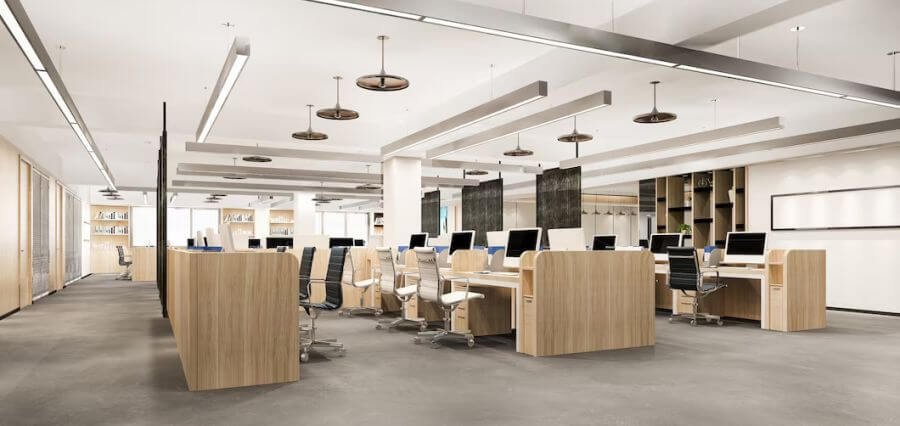When businesses look to refresh or transform their workspace, terms like “office fitout” and “office renovation” are often used interchangeably. While they both relate to improving a commercial space, they involve distinct processes, goals, and scopes of work. Understanding the difference is key to making informed decisions that align with your business objectives, budget, and timeline.
What’s an Office Fitout?
An office fitout refers to the process of taking an empty or shell space and transforming it into a fully functional workplace. This includes installing partitions, workstations, flooring, lighting, HVAC systems, IT infrastructure, and more. Fitouts are typically required for new office spaces or when relocating to a bare-bones tenancy. Office fitouts are generally divided into two stages:
- Category A (Cat A) Fitouts: These involve the basic infrastructure provided by the landlord, such as ceilings, lighting, air conditioning, and electrical systems.
- Category B (Cat B) Fitouts: This stage focuses on customising the space to suit the tenant’s specific needs. It includes interior design, furniture, branding elements, breakout areas, meeting rooms, and more.
A well-executed fitout not only enhances functionality but also reflects your company culture and brand identity. If you’re starting with a blank slate and want to tailor every aspect of your workplace to suit your team and clients, a fitout is likely the right solution. Businesses in Queensland looking for expert guidance often turn to for tailored solutions that combine style, practicality, and compliance.
What’s an Office Renovation?
An office renovation, on the other hand, is the process of upgrading or reconfiguring an existing office space. Rather than starting from scratch, renovations involve improving what is already there—be it modernising outdated interiors, updating technology, redesigning the floor plan, or improving energy efficiency. Renovations are ideal when you want to:
- Refresh a tired or outdated workspace
- Improve workflow or space utilisation
- Support growth without relocating
- Enhance employee wellbeing and productivity
Unlike fitouts, renovations typically involve working within an existing operational space, which may require staging work to minimise disruption to daily business activities.
Here’s the Key Differences at a Glance
| Feature | Office Fitout | Office Renovation |
| Starting Point | Empty or newly built space | Existing office setup |
| Scope of Work | Full installation of infrastructure | Updating or reconfiguring current setup |
| Purpose | Create a new, tailored environment | Improve or modernise an existing space |
| Design Flexibility | High – starting from scratch | Moderate – working within constraints |
| Business Continuity | Often done before move-in | May need to work around operations |
Which Option is Right for You?
Choosing between an office fitout and renovation depends on your current space, business goals, budget, and timeline. If you’ve secured a new tenancy and need to build it out to your specifications, a fitout is your best bet – however, if you’re staying put and want to breathe new life into your workspace, a renovation can deliver impressive results with less disruption.
No matter the path you take, partnering with experienced professionals ensures your project is delivered on time, within budget, and to the highest standards. Whether you’re planning an office fitout or a renovation project, aligning your workspace with your strategic vision is a worthwhile investment in your company’s future.
Credit: insightssuccess.com









